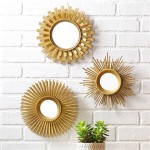How to Screen Mirror iPhone to Sony Bravia Android TV
Screen mirroring, also known as screen casting, allows users to display the content of their smartphone or tablet on a larger display, such as a television. This process, increasingly popular for presentations, gaming, and media consumption, enables a more engaging and communal viewing experience. For iPhone users wishing to mirror their screen to a Sony Bravia Android TV, several methods exist, each with its own advantages and disadvantages. Understanding these methods and the necessary steps is crucial to achieving a seamless and reliable connection.
The compatibility between Apple's iOS and Google's Android operating systems, which powers Sony Bravia TVs, is not inherently direct. Apple uses AirPlay as its native screen mirroring protocol, while Android devices often rely on Chromecast or Miracast. Consequently, direct AirPlay mirroring from an iPhone to a Sony Bravia TV may not be available without employing specific workarounds or third-party applications. However, Sony has integrated some level of AirPlay support into newer Bravia TV models, and alternative screen mirroring apps can bridge the gap for older models or when AirPlay is insufficient.
This article will explore several methods for screen mirroring an iPhone to a Sony Bravia Android TV, including utilizing AirPlay (if supported), employing third-party apps, and using an HDMI adapter. Each method's setup process, advantages, and potential limitations will be discussed in detail.
Utilizing AirPlay (If Supported by Your Sony Bravia TV)
AirPlay is Apple's proprietary wireless streaming protocol, designed for seamless integration within the Apple ecosystem. Newer Sony Bravia Android TVs have been updated to support AirPlay 2, allowing direct screen mirroring and video streaming from iPhones, iPads, and Macs. Before attempting to use AirPlay, it is essential to verify that the Sony Bravia TV model supports this feature.
To check for AirPlay support, navigate to the TV's settings menu. Look for options related to Apple AirPlay, Apple HomeKit, or simply AirPlay. If these options are present, the TV supports AirPlay. If not, consider other methods outlined later in this article.
The following steps outline the process of mirroring an iPhone to a Sony Bravia TV via AirPlay, assuming AirPlay support is confirmed:
- Ensure both the iPhone and the Sony Bravia TV are connected to the same Wi-Fi network. This is a fundamental requirement for AirPlay to function correctly.
- On the iPhone, swipe down from the top-right corner (or up from the bottom, depending on the iPhone model) to access the Control Center.
- Tap the "Screen Mirroring" button. It is typically represented by two overlapping rectangles.
- A list of available AirPlay devices will appear. Select the Sony Bravia TV from the list. The TV's name will likely include its model number or a user-defined name.
- If prompted, enter the AirPlay passcode that appears on the TV screen on the iPhone. This security measure prevents unauthorized mirroring.
- The iPhone's screen should now be mirrored on the Sony Bravia TV.
To stop screen mirroring, return to the Control Center on the iPhone, tap the "Screen Mirroring" button, and select "Stop Mirroring."
Troubleshooting AirPlay connection issues: If the iPhone cannot detect the Sony Bravia TV, verify that both devices are on the same Wi-Fi network and that AirPlay is enabled on the TV. Restarting both the iPhone and the TV can also resolve connectivity problems. Check for software updates on both the iPhone and the TV, as outdated software can sometimes cause compatibility issues. If encountering persistent connection problems, ensure the network router is functioning correctly and is not blocking AirPlay traffic. Some routers have settings that can restrict device communication, which may need to be adjusted.
Employing Third-Party Screen Mirroring Apps
When native AirPlay support is unavailable or proves unreliable, third-party screen mirroring applications provide an alternative solution. These apps, available on the App Store, facilitate screen mirroring between iOS devices and various smart TVs, including Sony Bravia Android TVs. Several reputable apps are available, each offering slightly different features and functionalities.
Before selecting an app, it is advisable to read user reviews and compare features to ensure compatibility and suitability for specific needs. Some apps offer free trials or limited functionality in their free versions, allowing users to test their performance before committing to a paid subscription or purchase.
Examples of popular screen mirroring apps include:
- AirBeam TV: Known for its user-friendly interface and reliable connection.
- MirrorMeister: Offers advanced features such as resolution adjustment and screen recording.
- LetsView: A free screen mirroring app with basic functionalities.
The process of using a third-party app typically involves the following steps:
- Download and install the chosen screen mirroring app from the App Store on the iPhone.
- Download and install the corresponding receiver app (if required) on the Sony Bravia Android TV. Some apps require a companion app to be installed on the TV. This can usually be found on the Google Play Store within the TV's interface.
- Ensure both the iPhone and the Sony Bravia TV are connected to the same Wi-Fi network.
- Launch the app on both the iPhone and the TV.
- Follow the app's instructions to connect the iPhone to the TV. This may involve scanning a QR code, entering an IP address, or selecting the TV from a list of available devices.
- Grant the app any necessary permissions, such as access to the local network.
- Once connected, the iPhone's screen should be mirrored on the Sony Bravia TV.
Troubleshooting issues with third-party apps: If the connection is unstable or the mirroring quality is poor, try adjusting the video quality settings within the app. Reducing the resolution or frame rate can improve performance, especially on older networks. Ensure that both the app and the TV's operating system are up to date. Firewall settings or network restrictions can sometimes interfere with screen mirroring apps. Check the router's settings to ensure that the app's communication is not being blocked. Some apps may require specific ports to be open on the network.
Using an HDMI Adapter
For situations where wireless screen mirroring is unreliable or unavailable, a wired connection via an HDMI adapter provides a dependable alternative. This method involves physically connecting the iPhone to the Sony Bravia TV using an adapter that converts the iPhone's Lightning port (or USB-C port on newer models) to an HDMI output.
Apple offers its own Lightning Digital AV Adapter, but several third-party adapters are also available. When choosing an adapter, ensure it is compatible with the iPhone model and supports the desired resolution and features (e.g., audio passthrough). Verify the adapter's compatibility before purchasing to avoid disappointment.
The setup process for using an HDMI adapter is straightforward:
- Connect one end of the HDMI cable to the HDMI port on the Sony Bravia TV. Note the HDMI port number (e.g., HDMI 1, HDMI 2) to select the correct input source later.
- Connect the other end of the HDMI cable to the HDMI port on the adapter.
- Plug the Lightning (or USB-C) connector of the adapter into the iPhone's charging port.
- Turn on the Sony Bravia TV and select the corresponding HDMI input source. This is typically done via the TV's remote control, using the "Input," "Source," or "HDMI" button.
- The iPhone's screen should now be mirrored on the Sony Bravia TV.
Advantages of using an HDMI adapter include a stable and reliable connection, lack of reliance on Wi-Fi network performance, and generally better video quality compared to wireless mirroring methods. The primary disadvantage is the need for a physical cable, which can limit mobility and be less convenient than wireless options.
Troubleshooting issues with HDMI adapters: If the iPhone's screen is not displayed on the TV, verify that all connections are secure and that the correct HDMI input source is selected on the TV. Try using a different HDMI cable or a different HDMI port on the TV. If the adapter requires external power, ensure it is properly connected to a power source. If encountering audio problems, check the TV's audio settings to ensure that the correct audio output is selected. Sometimes, the iPhone may need to be restarted for the adapter to be recognized correctly. Check the adapter's specifications to ensure it supports the resolution and refresh rate settings of the TV.
Ultimately, choosing the best method for screen mirroring an iPhone to a Sony Bravia Android TV depends on individual needs, preferences, and the specific capabilities of the devices involved. AirPlay provides a seamless wireless experience when supported, while third-party apps offer versatility for older TV models or when AirPlay performance is suboptimal. An HDMI adapter provides a reliable wired connection, ideal for situations requiring maximum stability and video quality.

How To Screen Mirror Iphone Sony Bravia Android Tv Cast Mobile Smart Airscreen

How To Screen Mirror Iphone Sony Bravia Android Tv Cast Mobile Smart Airscreen

Top 3 Ways To Screen Mirror Android Sony Tv

How To Screen Mirror From An Iphone A Sony Smart Tv

Screen Mirroring Iphone To Sony Tv 2024 Guide Free App

Screen Mirroring Iphone To Sony Tv 2024 Guide Free App

How To Mirror Iphone Sony Tv

How To Screen Mirror Iphone Sony Tv Best Ideas In 2024

Four Free Way To Help Screen Mirror Sony Tv

2024 How To Use Apple Airplay With Sony Smart Tvs








